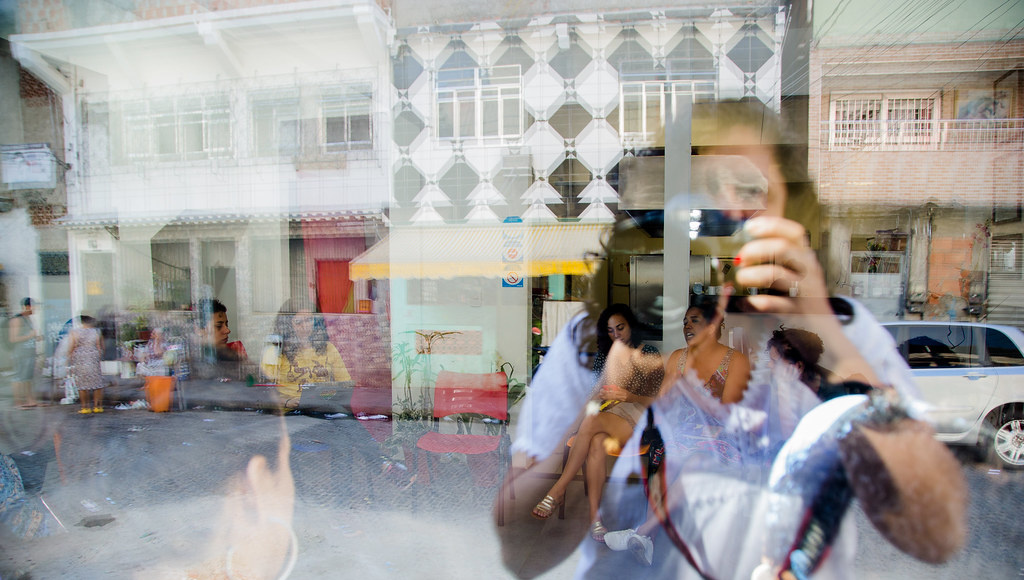Whilst Brazil is deemed one of the most violent and dangerous countries in the world, the national rate of violent deaths has decreased in recent years. Despite this, women and other gender and sexual minorities remain at greater risk.
Femicide increased drastically in Brazil from 2008-2019. According to the 2021 Atlas of Violence, one woman is killed every four hours in Brazil, where female homicides were reported as almost double the global average in 2017, according to the UN Office on Drugs and Crime.
The Femicide Law
A partial explanation for these shocking statistics is that a change in legislation led to increased reporting. In 2015, femicide (defined as the homicide of women, occurring in the context of domestic violence or because of gender-based discrimination against women) was deemed a specific crime under the Brazilian Penal Code, in the Brazilian Femicide Law.
As well as positively influencing the reporting of crimes, the establishment of the Lei do Feminicídio has undoubtedly highlighted awareness of violence, especially in the home. Considering that 95% of female murders through domestic violence were perpetrated by intimate partners, this is particularly significant.
Since the 1980s, Brazil has formalised 14 treaties and conventions which support the protection of victims of violence, women’s rights and gender equality. Legislation such as the Maria da Penha Law, established in 2006, has effected significant changes in national criminal and penal codes, supporting the creation of helpline services and shelters for women at risk of domestic violence, as well as providing information to women and girls about their rights and support options. Though despite these legislative advancements, the statistical risk of experiencing violence remains high for women and other gender minorities.
Intersectional Violence
Analysing intersectional factors such as race, age, class and sexuality is key to understanding some of the injustices which underpin gendered violence. Race plays a particularly significant role throughout Brazil and of course influences violence against women, with Black women being statistically at higher risk of experiencing violence and being victimised, while simultaneously being more prone to precarity and having higher incidences of household headship as solo parents.
While the gap between homicide rates against Black and non-Black women is wide, the difference remains higher in urban areas. In Alagoas, the state with the widest gap, the rate of homicides against Black women is seven times higher per 100 thousand women than that of non-Black women.
In Alagoas, the rate of homicides against Black women is seven times higher than that of non-Black women
In terms of violent crimes, including but not limited to rape, intentional and attempted homicide, femicide, and attempts of femicide, Black women are statistically most at risk. This remains true for cases of rape of minors in Brazil, which amounted to 3,089 girls under the age of 14 in 2019, where over half were Black.
These statistics reflect the highly racialised and discriminatory nature of violence against women and girls in the country, representative of a deep-rooted racist ideology.
Consistent with these trends, whilst the number of homicides against non-Black women decreased by 14% 2008-2018, the number of homicides of Black women increased by 13%, highlighting that the risks to which Black women are subjected are central to the problem of lethal gendered violence.
LGBTQ+ and trans women are also at significantly higher risk of experiencing violence in Brazil, deemed the deadliest country in the world for trans people, who are often the victims of cruel forms of violence as acts of hate.
Once again, race is an important intersectional factor and one study showed that of the 163 murders of trans people in 2018, 82% were Black.
Lesbocide rates have also increased drastically over recent years, with 2017 showing an increase of 237% in relation to the previous year. As well as homophobic and discriminatory ideologies being the cause of these acts of violence, the fact that men see lesbians (particularly non-feminine lesbians and other sexual and gender-minority women) as a threat to masculine power, contributes to this.
From 2016-2017, the rate of lesbocide rose 237%
VAWG in Rio de Janeiro
Rio de Janeiro accounted for 35% of the country’s total incidence of violence against women and girls in 2019, closely followed by the inner areas of the state of Rio de Janeiro, with 32%. The state also has some of the highest indicators of urban violence in Brazil and gendered violence is particularly prevalent.
In cases of violence against women and girls in Rio in 2019, over half of victims were aged between 30 and 59 and almost one third were aged 18-29 years old. While girls and female teenagers accounted for 29% of the victims of sexual assault in the same year, they represented 70% of rape cases and according to one 2020 study, 4 out of 10 victims of rape were 11-year-old girls.
Compounding this violence, Rio de Janeiro is marked by historical forms of violence, particularly racial injustice, maintained through unofficial segregation between the rich and poor. This divide overlaps with race and severely affects Black, poor and marginalised women who reside in and around the city, contributing to the significantly higher risk for Black women of being victims of lethal violence, particularly in the case of femicide, intentional homicide and rape.
In 2019, 59% of registered cases of domestic violence took place inside the victim’s home, and 47% of cases were perpetrated by intimate partners or former partners.
Consistent with the rest of Brazil, Covid-19 and its subsequent lockdown period inflated cases of gendered violence because of restrictions to mobility and access to services. During the period of isolation between 13 March and 31 December 2020, over 250 women per day were victims of violence throughout the state, with 80.7% of abuses committed by intimate partners or former partners.
During the period of Covid-19 isolation between 13 March and 31 December 2020, over 250 women per day were victims of violence through the state, with 80.7% of abuses committed by intimate partners or former partners
Whilst over 73,000 women were victims of some form of violence in Rio de Janeiro in 2020, this figure represents a 27% decrease from the figure reported in the same period of 2019, which the Instituto de Segurança Pública attributes to potential underreporting due to pandemic restrictions – which both exacerbate gendered and domestic violence and make it more difficult for women to report to the police.
VAWG in Maré
Urban peripheries and favelas are spatially or symbolically separated from the city of Rio de Janeiro, meaning that data and knowledge about the reality of violence in the 1,400 favelas in the state is incomplete. The first and only extensive research on violence against women and girls here (funded by the ESRC) was conducted in 2017-2018 by a team from Redes da Maré, the Federal University of Rio de Janeiro, People’s Palace Projects at Queen Mary University of London and King’s College London, led by Cathy McIlwaine. This project was conducted in 15 of the 16 favelas constituting Maré in the north of Rio de Janeiro.
Of the 801 women who took part in the research, over three quarters agreed that gender-based violence occurred in the favela, yet only a third declared outright that they had suffered it. When 12 different forms of violence were subsequently listed, this number almost doubled to 57%, with 30% of these women experiencing sexual violence, 34% experiencing physical violence and 45% experiencing psychological violence. Despite the latter being the most prevalent form of violence, for example in the forms of threats of physical aggression, negative comments or verbal abuse, it was most commonly unrecognised as a form of violence by the women until the specific traits were explained.
Psychological violence was not commonly recognised as a form of violence by women in Maré
Similar to the rest of Rio de Janeiro and Brazil as a whole, gendered violence in Maré is increasing. This is demonstrated by the fact that 18–29-year-olds were the group most likely to experience violence, accounting for 35% of the total number of women who reported experiencing violence. Of this age group of women, over two thirds reported experiencing some form of violence.
Intimate partner violence accounted for over half of psychological violence incidences, and around two thirds of all physical and sexual violence incidences, drawing attention to the impacts that the pandemic may have had for many women in Maré. However, single women were still statistically more likely to have experienced violence, with over two thirds having reported it. The research highlighted a tendency towards re-victimisation, meaning women who experienced violence were more likely to have experienced multiple forms.
The research highlighted a tendency towards re-victimisation, meaning women who experienced violence were more likely to have experienced multiple forms
Once again, race plays an underlying role in cases of violence against women and girls in Maré. All Indigenous women suffered some form of violence, along with 78% of women unsure about their race and 69% of Black women. This compared to just over half of white women who suffered violence, illustrating that there are significant racial injustices which are expressed in terms of physical, sexual and psychological violence statistics.
Less than one fifth of the women in this research sought formal support, which was mostly from the women’s police service rather than the police, with 83% relying on informal support networks alone. Younger women were more likely to seek support, although this was intersected by race. Despite the data showing that mixed race women, Black women and women who were unsure of their race were most likely to experience different forms of violence, they were least likely to access support services.
This research also drew attention to the multidimensional nature of violence against women and girls in the Maré favelas, highlighting how it occurs in both public and private spheres, by various perpetrators. The gendered nature of violence in the favelas is deeply imbued with gendered and racialised hierarchies and spatialities. What’s more, with few women confident in seeking support from authorities, trustworthy and familiar women’s support networks are more vital than ever.
Less than one fifth of the women in this research sought formal support
This article is based on research compiled by Moniza Rizzini Ansari, Yara Evans and Esther Montesinos as part of the ‘Transnational VAWG‘ and ‘Dignity and Resistance‘ projects directed by Cathy McIlwaine, working with Redes da Maré in Rio de Janeiro. The former is funded by the ESRC and Newton Fund under grant ES/N013247/1 and the latter by the British Academy and the Global Challenges Research Fund under grant HDV190030. It was written by Alice Wright, a recent graduate from the Department of Geography, King’s College London.
Click here to read more about Redes da Maré (Networks of Maré), a civil society institution that produces knowledge, projects and actions to ensure effective public policies to improve the lives of 140,000 residents of the 16 Maré’s favelas.




